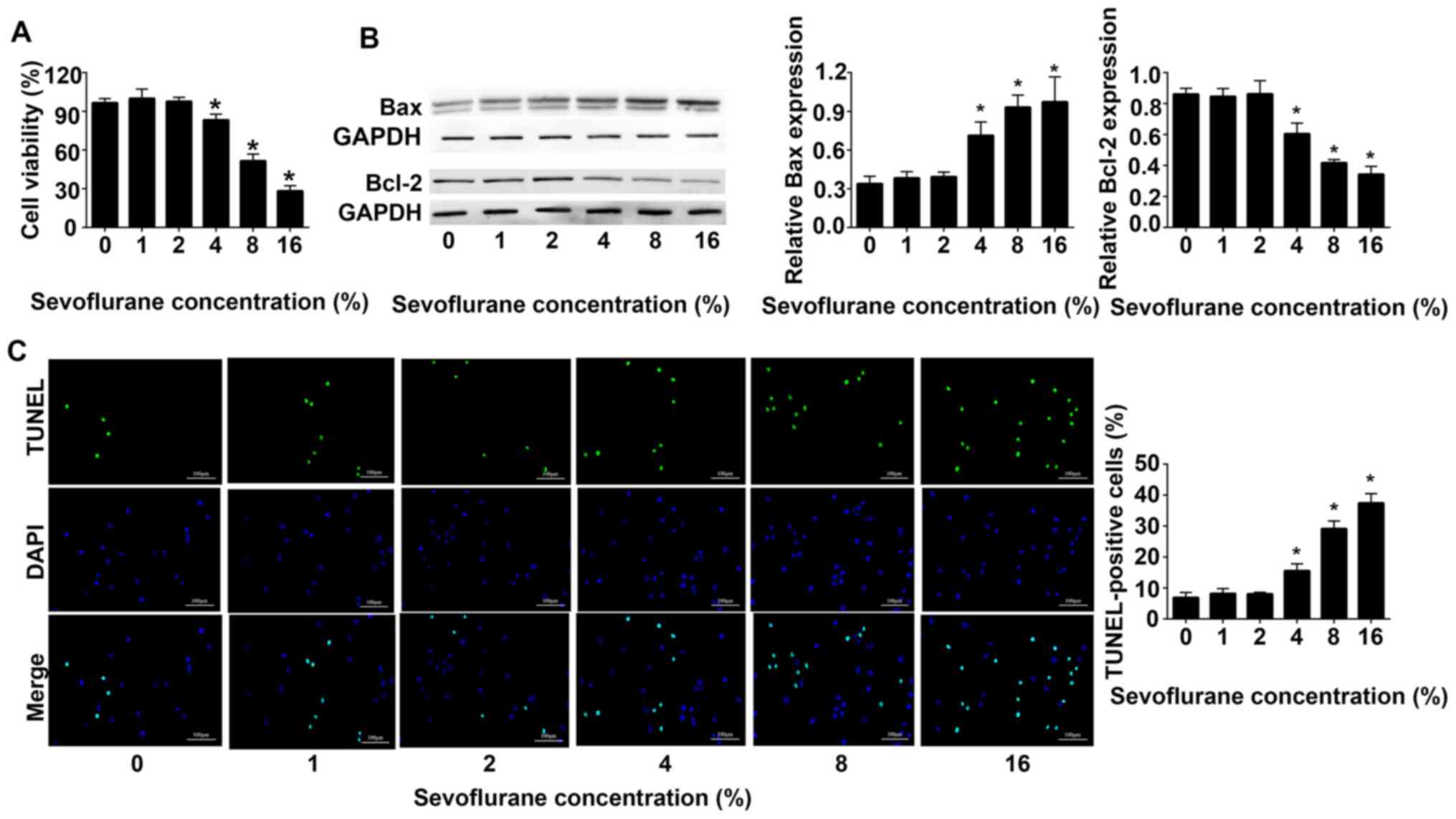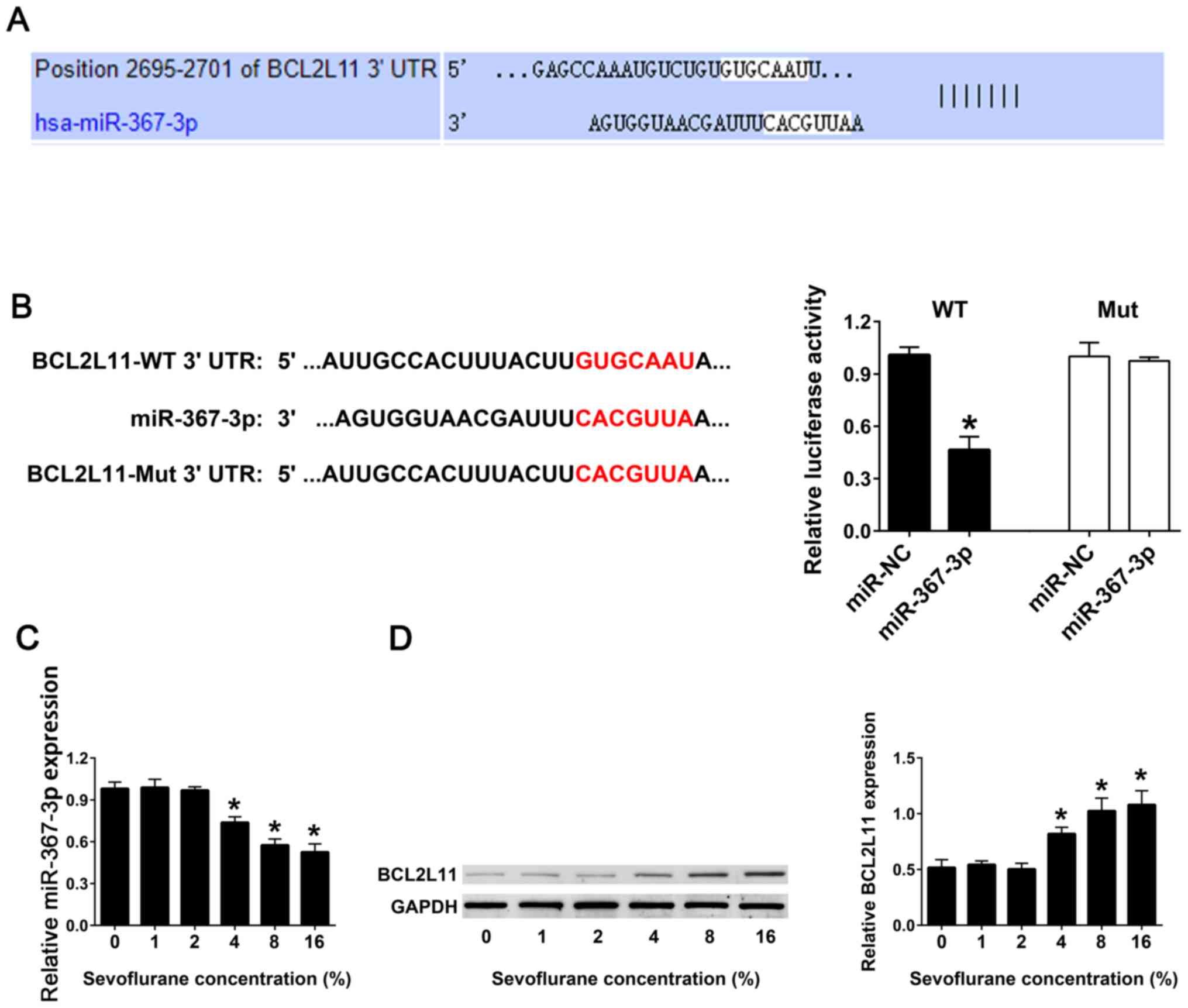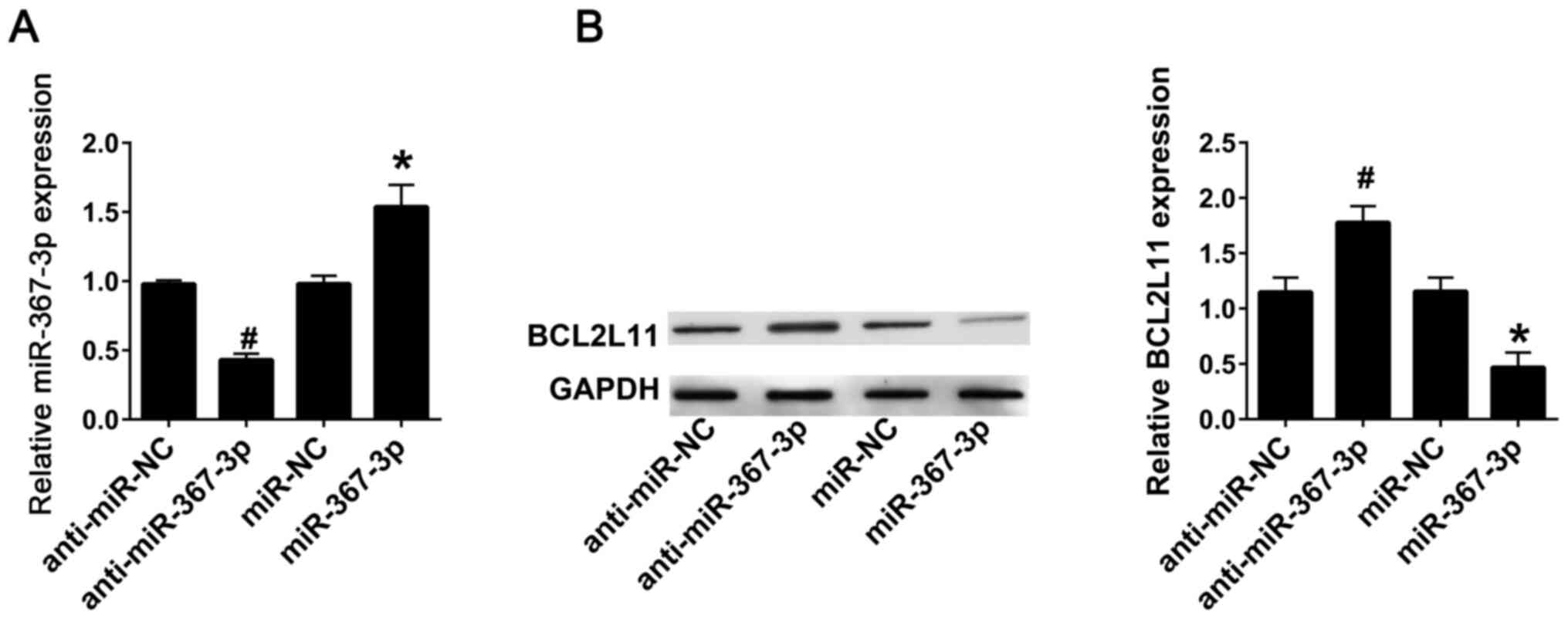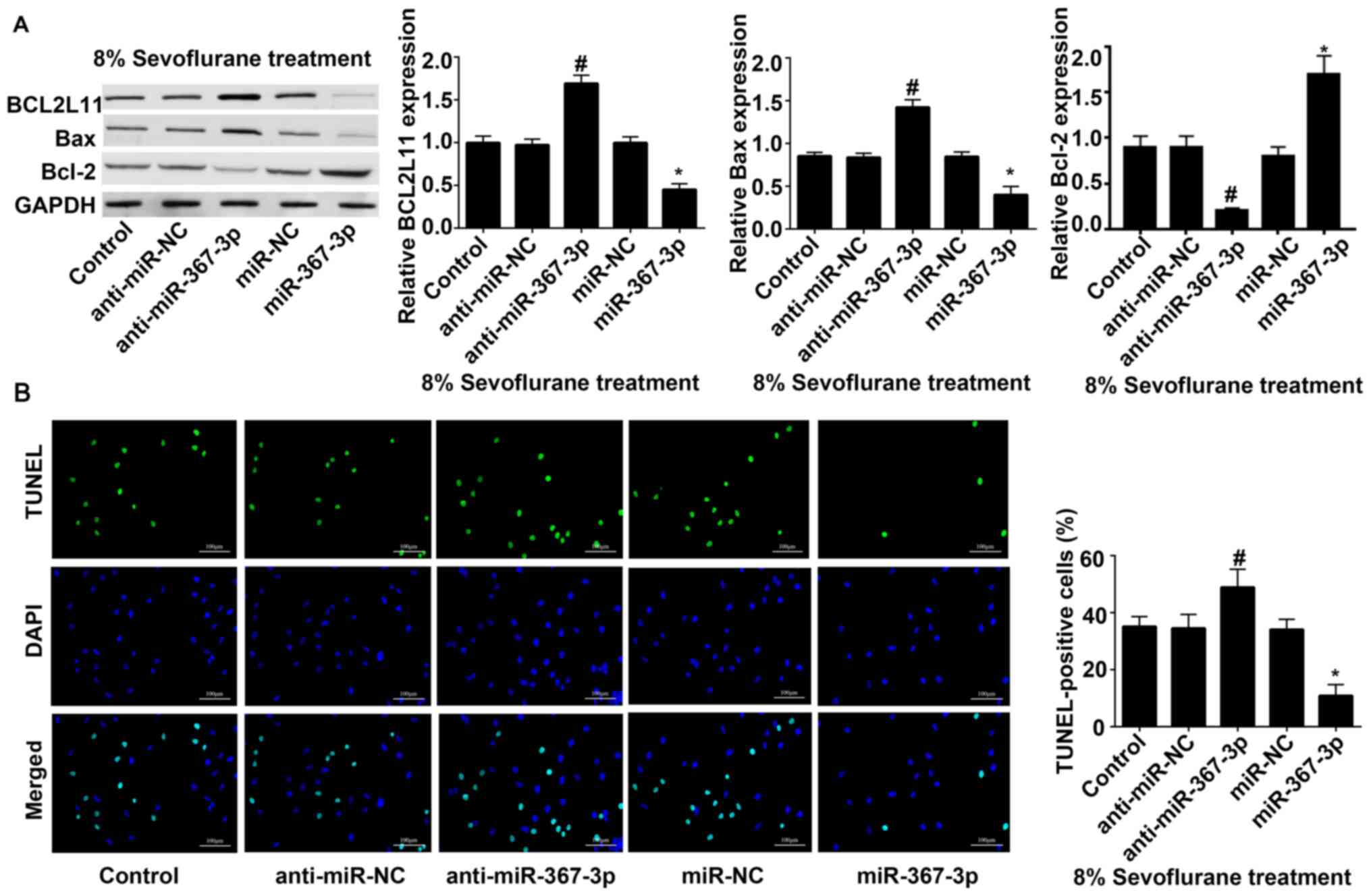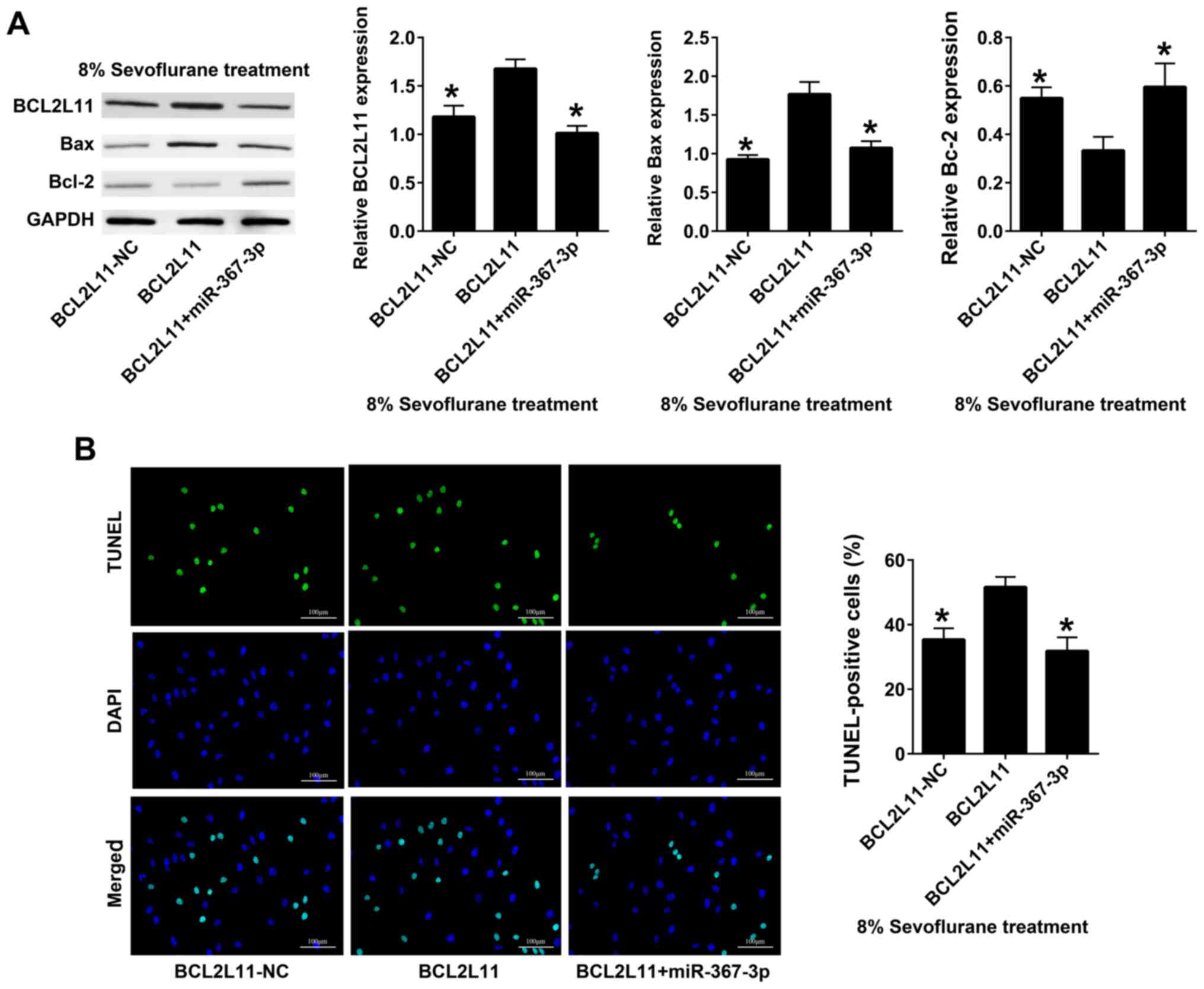|
1
|
Edgington TL, Muco E and Maani CV (eds):
Sevoflurane. In: StatPearls [Internet]. StatPearls Publishing,
Treasure Island, FL, 2021.
|
|
2
|
Brioni JD, Varughese S, Ahmed R and Bein
B: A clinical review of inhalation anesthesia with sevoflurane:
From early research to emerging topics. J Anesth. 31:764–778.
2017.PubMed/NCBI View Article : Google Scholar
|
|
3
|
Yang X, Zhang W, Wu H, Fu S, Yang J, Liu
S, Zhao Y, Zhang X and Liu J: Downregulation of CDK5 restores
sevoflurane-induced cognitive dysfunction by promoting
SIRT1-mediated autophagy. Cell Mol Neurobiol. 40:955–965.
2020.PubMed/NCBI View Article : Google Scholar
|
|
4
|
Guo S, Liu L, Wang C, Jiang Q, Dong Y and
Tian Y: Repeated exposure to sevoflurane impairs the learning and
memory of older male rats. Life Sci. 192:75–83. 2018.PubMed/NCBI View Article : Google Scholar
|
|
5
|
Satomoto M, Sun Z, Adachi YU, Kinoshita H
and Makita K: Sevoflurane preconditioning ameliorates
lipopolysaccharide-induced cognitive impairment in mice. Exp Anim.
67:193–200. 2018.PubMed/NCBI View Article : Google Scholar
|
|
6
|
Andropoulos DB: Effect of anesthesia on
the developing brain: Infant and fetus. Fetal Diagn Ther. 43:1–11.
2018.PubMed/NCBI View Article : Google Scholar
|
|
7
|
Istaphanous GK and Loepke AW: General
anesthetics and the developing brain. Curr Opin Anaesthesiol.
22:368–373. 2009.PubMed/NCBI View Article : Google Scholar
|
|
8
|
Zuo Y, Chang Y, Thirupathi A, Zhou C and
Shi Z: Prenatal sevoflurane exposure: Effects of iron metabolic
dysfunction on offspring cognition and potential mechanism. Int J
Dev Neurosci. 81:1–9. 2021.PubMed/NCBI View Article : Google Scholar
|
|
9
|
Qi Z, Li S, Su Y, Zhang J, Kang Y, Huang
Y, Jin F and Xing Q: Role of microRNA-145 in protection against
myocardial ischemia/reperfusion injury in mice by regulating
expression of GZMK with the treatment of sevoflurane. J Cell
Physiol: Mar 14, 2019 (Epub ahead of print). doi:
10.1002/jcp.28323.
|
|
10
|
Chen X, Zhou X, Lu D, Yang X, Zhou Z, Chen
X, Chen Y, He W and Feng X: Aberrantly expressed long noncoding
RNAs are involved in sevoflurane-induced developing hippocampal
neuronal apoptosis: A microarray related study. Metab Brain Dis.
31:1031–1040. 2016.PubMed/NCBI View Article : Google Scholar
|
|
11
|
Bedirli N, Bagriacik EU, Yilmaz G, Ozkose
Z, Kavutçu M, Cavunt Bayraktar A and Bedirli A: Sevoflurane exerts
brain-protective effects against sepsis-associated encephalopathy
and memory impairment through caspase 3/9 and Bax/Bcl signaling
pathway in a rat model of sepsis. J Int Med Res. 46:2828–2842.
2018.PubMed/NCBI View Article : Google Scholar
|
|
12
|
Zhang LM, Zhao XC, Sun WB, Li R and Jiang
XJ: Sevoflurane post-conditioning protects primary rat cortical
neurons against oxygen-glucose deprivation/resuscitation via
down-regulation in mitochondrial apoptosis axis of Bid, Bim,
Puma-Bax and Bak mediated by Erk1/2. J Neurol Sci. 357:80–87.
2015.PubMed/NCBI View Article : Google Scholar
|
|
13
|
Subramanyam D, Lamouille S, Judson RL, Liu
JY, Bucay N, Derynck R and Blelloch R: Multiple targets of miR-302
and miR-372 promote reprogramming of human fibroblasts to induced
pluripotent stem cells. Nat Biotechnol. 29:443–448. 2011.PubMed/NCBI View
Article : Google Scholar
|
|
14
|
Kaid C, Silva PB, Cortez BA, Rodini CO,
Semedo-Kuriki P and Okamoto OK: miR-367-3p promotes proliferation
and stem-like traits in medulloblastoma cells. Cancer Sci.
106:1188–1195. 2015.PubMed/NCBI View Article : Google Scholar
|
|
15
|
Tabet F, Lee S, Zhu W, Levin MG, Toth CL,
Cuesta Torres LF, Vinh A, Kim HA, Chu HX, Evans MA, et al:
MicroRNA-367-3p regulation of GPRC5A is suppressed in ischemic
stroke. J Cereb Blood Flow Metab. 40:1300–1315. 2020.PubMed/NCBI View Article : Google Scholar
|
|
16
|
Zhou Z, Dong Y, Zhou H, Liu J and Zhao W:
miR-143-3p directly targets GLUT9 to reduce uric acid reabsorption
and inflammatory response of renal tubular epithelial cells.
Biochem Biophys Res Commun. 517:413–420. 2019.PubMed/NCBI View Article : Google Scholar
|
|
17
|
Jones-Bolin S: Guidelines for the care and
use of laboratory animals in biomedical research. Curr Protoc
Pharmacol. 59:A.4B.1–A.4B.9. 2012.PubMed/NCBIdoi: 10.1002/0471141755.pha04bs59.
|
|
18
|
Xu Y, Wang H, Li F, Heindl LM, He X, Yu J,
Yang J, Ge S, Ruan J, Jia R and Fan X: Long non-coding RNA
LINC-PINT suppresses cell proliferation and migration of melanoma
via recruiting EZH2. Front Cell Dev Biol. 7(350)2019.PubMed/NCBI View Article : Google Scholar
|
|
19
|
Abd-Elrahim Batran S: Toxicity of
environmental ozone exposure on mice olfactory bulbs, using western
blot technique. Toxicol Rep. 7:453–459. 2020.PubMed/NCBI View Article : Google Scholar
|
|
20
|
Livak KJ and Schmittgen TD: Analysis of
relative gene expression data using real-time quantitative PCR and
the 2(-Delta Delta C(T)) method. Methods. 25:402–408.
2001.PubMed/NCBI View Article : Google Scholar
|
|
21
|
Geng C, Qiao Y, Guo Y, Han W, Wu B, Wang
C, Zhang J, Chen D, Yang M and Jiang P: Integrated metabolomics and
lipidomics profiling of hippocampus reveal metabolite biomarkers in
a rat model of chronic unpredictable mild stress-induced
depression. Ann Transl Med. 7(781)2019.PubMed/NCBI View Article : Google Scholar
|
|
22
|
Terrell RC: The invention and development
of enflurane, isoflurane, sevoflurane, and desflurane.
Anesthesiology. 108:531–533. 2008.PubMed/NCBI View Article : Google Scholar
|
|
23
|
Kasahara M, Ichinohe T, Okamoto S, Okada
R, Kanbe H and Matsuura N: Concomitant administration of nitrous
oxide and remifentanil reduces oral tissue blood flow without
decreasing blood pressure during sevoflurane anesthesia in rabbits.
J Anesth. 29:421–425. 2015.PubMed/NCBI View Article : Google Scholar
|
|
24
|
Olutoye OA, Baker BW, Belfort MA and
Olutoye OO: Food and drug administration warning on anesthesia and
brain development: Implications for obstetric and fetal surgery. Am
J Obstet Gynecol. 218:98–102. 2018.PubMed/NCBI View Article : Google Scholar
|
|
25
|
Beekoo D, Yuan K, Dai S, Chen L, Di M,
Wang S, Liu H and ShangGuan W: Analyzing electroencephalography
(EEG) waves provides a reliable tool to assess the depth of
sevoflurane anesthesia in pediatric patients. Med Sci Monit.
25:4035–4040. 2019.PubMed/NCBI View Article : Google Scholar
|
|
26
|
Zhou X, Li W, Chen X, Yang X, Zhou Z, Lu D
and Feng X: Dose-dependent effects of sevoflurane exposure during
early lifetime on apoptosis in hippocampus and neurocognitive
outcomes in Sprague-Dawley rats. Int J Physiol Pathophysiol
Pharmacol. 8:111–119. 2016.PubMed/NCBI
|
|
27
|
Yang F, Shan Y, Tang Z, Wu X, Bi C, Zhang
Y, Gao Y and Liu H: The neuroprotective effect of hemin and the
related mechanism in sevoflurane exposed neonatal rats. Front
Neurosci. 13(537)2019.PubMed/NCBI View Article : Google Scholar
|
|
28
|
Li H, Xia T, Guan Y and Yu Y: Sevoflurane
regulates glioma progression by Circ_0002755/miR-628-5p/MAGT1 axis.
Cancer Manag Res. 12:5085–5098. 2020.PubMed/NCBI View Article : Google Scholar
|
|
29
|
Zhou X, Xian D, Xia J, Tang Y, Li W, Chen
X, Zhou Z, Lu D and Feng X: MicroRNA-34c is regulated by p53 and is
involved in sevoflurane-induced apoptosis in the developing rat
brain potentially via the mitochondrial pathway. Mol Med Rep.
15:2204–2212. 2017.PubMed/NCBI View Article : Google Scholar
|
|
30
|
Zhu J, Zhang Z, Jia J, Wang L, Yang Q,
Wang Y and Chen C: Sevoflurane induces learning and memory
impairment in young mice through a reduction in neuronal glucose
transporter 3. Cell Mol Neurobiol. 40:879–895. 2020.PubMed/NCBI View Article : Google Scholar
|
|
31
|
Kaid C, Jordan D, Bueno HMS, Araujo BHS,
Assoni A and Okamoto OK: miR-367 as a therapeutic target in
stem-like cells from embryonal central nervous system tumors. Mol
Oncol. 13:2574–2587. 2019.PubMed/NCBI View Article : Google Scholar
|
|
32
|
Wang GC, He QY, Tong DK, Wang CF, Liu K,
Ding C, Ji F and Zhang H: miR-367 negatively regulates apoptosis
induced by adriamycin in osteosarcoma cells by targeting KLF4. J
Bone Oncol. 5:51–56. 2016.PubMed/NCBI View Article : Google Scholar
|















